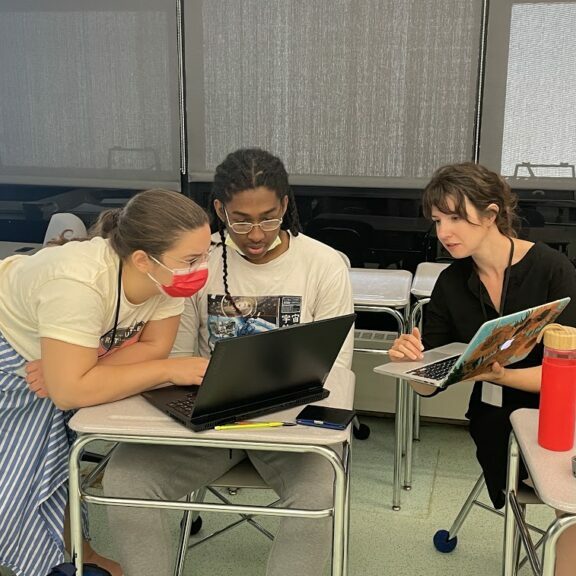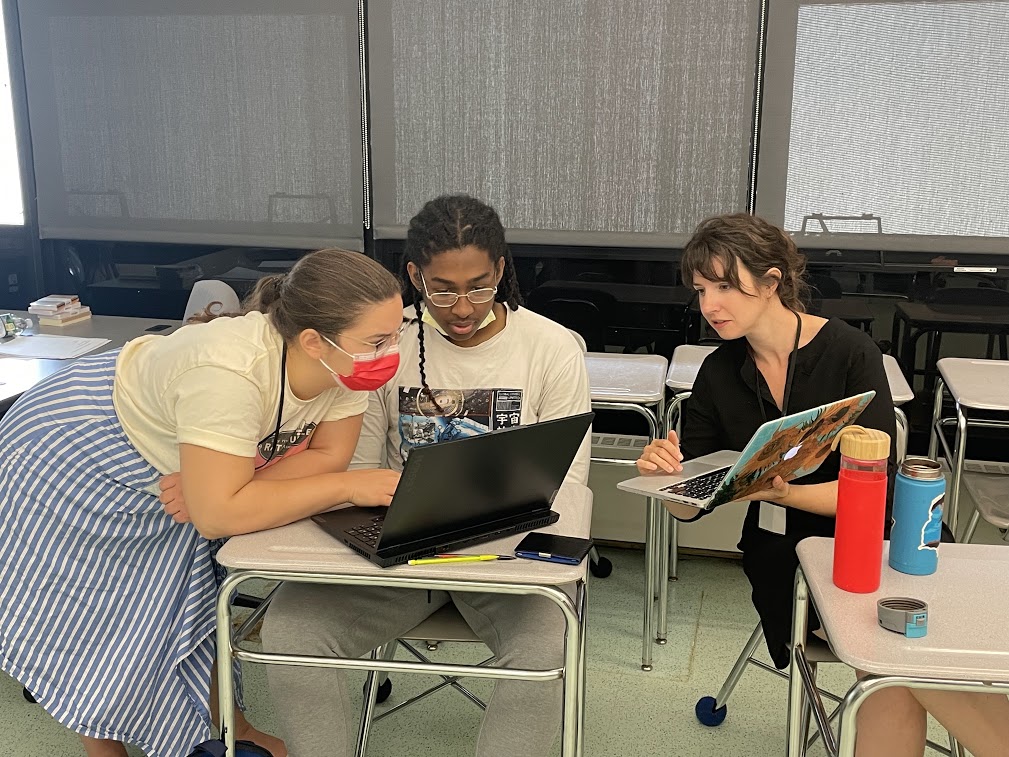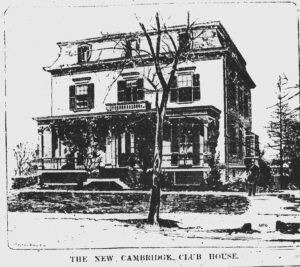
In identifying ways to improve neighborhoods, one lesson is: Students must get out and explore
By Katherine Petta, 2022

Rising seniors in the Cambridge Harvard Summer Academy were hard at work assuming the role of activists this summer in their English class. Students were tasked to identify, investigate, analyze and evaluate a single problem or issue they identify in their neighborhood. From there, they developed a small, feasible solution that they submitted through the Cambridge participatory budget submission portal, which was open through Sunday. Their final product was the creation of a website that showcased their research. They had an opportunity to present their work in a small forum made up of staff from the academy, which included mentor and pre-service teachers, professors from the Harvard Graduate School of Education and local school leaders.
Students were asked to think about this project in four parts: Neighborhood Reflection, Investigation of an Issue, Solution on a Shoestring and a final reflection on their learning over the course of the summer.
Neighborhood reflection
Before their research, students were asked to reflect upon their neighborhood and write a story for their viewers. Beginning the project here supported the class in envisioning how they want their communities to look and feel, and ensured that their activism was centered on the real needs of their communities.
This reflection work involved combining personal experiences with historical investigation. The class took a walking tour with Beth Folsom, program manager at History Cambridge. Highlights on the tour included: the Cambridge Community Center, Margaret Fuller House, St. Augustine’s Church, the George Close Building and the Crosswinds Mural. Getting to know their city more deeply through historical and activist lenses allowed for students to explore the origins of different elements of Cambridge and how people have worked over the years to make change. Students then brought this investigation closer to home, exploring the history of their own neighborhood, including a specific history of the name of their street. Exploring the city on foot “helps students want to learn more,” one student said. “Staying inside a classroom can get frustrating when you’re just sitting down for however long. But exploring outside can make students more interested.”
The partnership between History Cambridge and the academy provided a unique opportunity for students to connect historical thinking and personal experiences and enabled them to better see themselves within a rich tradition of activism and change.
Investigation of an issue
From there, students selected a research topic and spent some time at the Cambridge Public Library accessing databases and local resources including the Cambridge Chronicle. Issues investigated included: homelessness in Cambridge, affordable housing and inequalities in the local health care system.
Solution on a shoestring and final reflection
After students had done some research on their selected issue, they were asked to consider plausible small-scale, practical solutions and submit one as part of the City of Cambridge’s Participatory Budget process. The final stage of the process included the creation of a Google site to publish their work along, with a formal reflection on their learning over the course of the four-week summer program.
Student testimonials on partnerships in project-based learning
Creating a project-based learning experience in partnership with local organizations such as History Cambridge was found to be a powerful learning experience that helps make learning relevant, engaging and fun.“Exploring the city is a good thing for kids. Not only does it serve as a break from traditional learning but a new perspective on what they learn and the city as a whole. This class has been eye-opening,” a student said. “I learned a lot I didn’t know. All this work gave me a new perspective on learning. When we are talking about our city, community is a big thing, and how we shape our community matters.”
Teacher testimonials
Teacher candidates from Harvard’s Graduate School of Education were instrumental in the development of this project. Their testimonials not only speak to the successful partnership between the academy and History Cambridge, but to the larger importance of teachers creating opportunities to connect their classrooms with local historical societies to enrich experiences in the classroom.
Fiona Stevenson: When we went on the tour with History Cambridge at the beginning of our project-based learning unit, a lot of the students and staff had lived in Cambridge for years. We were able to learn about sites we had lived within walking distance of for years and never really noticed or learned about before. Moving forward with the project, students felt more invested in their research because it felt as though the classroom was not just contained within four walls; it had extended into the city, its history and its communities.
Sage Engberg: The walking tour of Cambridge was instrumental in helping students situate their research in the historical context of local activism. When students moved into researching issues of local concern, having this real-world experience allowed them to make stronger connections. One student ultimately chose to propose a solution featuring the Margaret Fuller House, one of the sites we visited on the tour. As a teacher, witnessing this student’s project move from broad idealism to concrete, locally impactful solutions was incredibly rewarding.
Alaina Ratanapool: Watching students connect with their community has been a really special experience for me as a teacher. Students that have lived in Cambridge for their whole lives knew seldom about community members that worked to make this city more safe and accessible. All too often we know little to no information about the buildings and organizations right next door. I’m glad I got to see them make connections and learn how to create their own change.
Julia Desmarais: Learning focused on real-life issues that has real purpose allows students to grow their reading and writing skills, develop self-efficacy and find engagement in the work. Being able to work with History Cambridge allowed students to feel the deep connection between their work and real places, and watching the students get excited on the tour to learn about the history of places they know well and ask questions to learn more was wonderful. Being in the physical spaces allowed our virtual work to be more powerful! As a teacher in my first five years of teaching, I plan to take this project and the learning from it with me to inform the teaching I do.
This article was originally published in our “Did You Know?” column in Cambridge Day.


